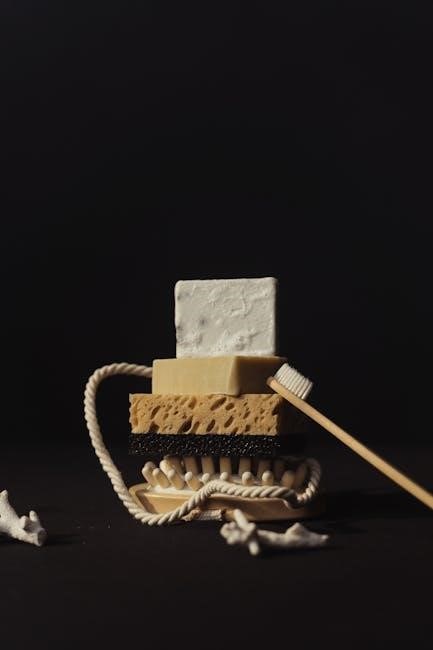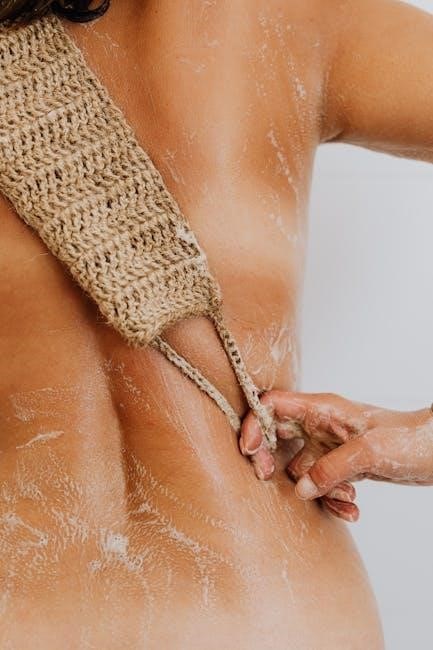Understanding proper care for DTF-printed garments is essential to maintain vibrant prints and durability. This guide provides detailed washing, drying, and maintenance tips to keep your DTF transfers looking their best while avoiding common mistakes.
What is DTF Printing?
DTF (Direct-to-Film) printing is a modern digital printing technique that transfers vibrant, full-color designs onto fabrics using a heat press. Unlike traditional methods, DTF eliminates the need for weeding or masking, making it efficient for intricate designs. The process involves printing the design onto a special film, which is then heat-pressed onto the garment. This method works on both light and dark fabrics, offering durable and long-lasting results. DTF printing is popular for its versatility and ability to produce high-quality images with minimal effort. Proper care, including specific washing and drying practices, is essential to maintain the integrity and vibrancy of DTF prints over time.
Why Proper Washing is Important for DTF Prints
Proper washing is crucial for maintaining the quality and longevity of DTF prints. Incorrect washing methods can lead to fading, cracking, or peeling of the design. DTF prints rely on a strong adhesive bond between the film and fabric, which can weaken if exposed to hot water or harsh chemicals. Additionally, improper care can cause the vibrant colors to dull or the transfer to separate from the garment. Following recommended washing practices ensures the design remains intact and retains its visual appeal. Regular care also prevents damage from friction and abrasion, extending the life of the print. Proper washing habits are essential for preserving the investment in DTF-printed apparel.

Pre-Washing Care for DTF Garments
Before washing, allow DTF prints to set for at least 24-48 hours to ensure proper adhesion. Turn garments inside out to protect the design during washing.
Recommended Waiting Time Before Washing
Allowing DTF-printed garments to rest for 24-48 hours before washing ensures the transfer fully bonds with the fabric. This waiting period prevents peeling or cracking of the design. For best results, wait at least 24 hours after heat pressing to wash. This allows the adhesive to cure properly, ensuring durability. Washing too soon can weaken the bond, leading to premature fading or damage. Patience is key to maintaining the vibrant colors and longevity of your DTF prints. Proper waiting ensures the design stays intact through multiple washes, keeping your garment looking fresh and professional.
Importance of Turning Garments Inside Out
Turning DTF-printed garments inside out before washing is crucial to protect the design from abrasion and friction. This simple step prevents the print from coming into direct contact with detergent, reducing the risk of fading or cracking. Additionally, it shields the transfer from mechanical stress caused by washing machines, which can weaken the bond between the ink and fabric. By minimizing exposure to harsh conditions, turning garments inside out helps preserve the vibrancy and integrity of the DTF print. This practice is essential for maintaining the appearance and longevity of your printed items, ensuring they remain fresh and professional-looking after multiple washes.

Washing Methods for DTF Prints
Washing DTF prints requires cold water, a gentle cycle, and mild detergent. Avoid harsh chemicals and fabric softeners to protect the print. Turn garments inside out and machine wash to prevent abrasion and fading.
Using Cold or Cool Water
Using cold or cool water is crucial for preserving DTF prints. Hot water can cause colors to fade and the transfer to peel off. Turn garments inside out before washing to protect the design from friction. Cold water prevents shrinking and ensures the adhesive remains intact. Avoid soaking or submerging the garment, as this can weaken the bond between the print and fabric. Gently machine wash on a low setting to maintain the print’s vibrancy and longevity. This method ensures the design stays intact for many washes, keeping your DTF-printed items looking fresh and professional.
Choosing a Gentle Washing Cycle
Selecting a gentle washing cycle is vital to preserve the quality of DTF prints. A delicate or low-intensity cycle prevents excessive agitation, which can damage the transfer. Avoid using harsh settings or heavy-duty cycles, as they may cause the print to crack or peel. Opt for a cycle designed for sensitive fabrics to minimize friction and abrasion. This ensures the adhesive remains securely bonded to the garment, maintaining the print’s integrity. A gentle cycle also prevents shrinking and fading, making it the best choice for extending the lifespan of your DTF-printed items. Always check your washer’s settings to ensure the right cycle is selected.
Use of Mild Detergents
Using mild detergents is crucial for maintaining the quality of DTF prints. Harsh chemicals or bleach can weaken the adhesive and cause the design to fade or peel. Opt for a gentle, non-abrasive detergent that is free from bleach and fabric softeners, as these can damage the transfer. Mild detergents are designed to clean without stripping the fabric of its finish, ensuring the DTF print remains intact. Avoid using heavy-duty or industrial-strength cleaners, as they can compromise the print’s durability. Always follow the detergent’s instructions for proper usage to ensure the best results for your DTF-printed garments.
Drying and Post-Washing Care
For optimal care, tumble dry on low heat or air-dry. Avoid direct sunlight to prevent fading. Gently reshape garments while damp to maintain their original fit and appearance.
Tumble Drying on Low Heat
Tumble drying on low heat is the recommended method for DTF-printed garments; High heat can cause the print to fade or crack, so using a low-heat setting is crucial. Remove the garment as soon as the cycle finishes to prevent creasing. If possible, allow it to air-dry slightly before folding or wearing. Avoid exposing the garment to direct sunlight during drying, as UV rays can weaken the adhesive and cause discoloration. Gently reshape the garment while it’s still damp to maintain its original fit and appearance. This method ensures the print remains vibrant and the fabric stays intact for a longer period.
Avoiding Direct Sunlight for Drying
Avoiding direct sunlight when drying DTF-printed garments is crucial to preserve the print’s quality. Sunlight exposure can cause the colors to fade and the adhesive to weaken, leading to peeling or cracking. Instead, opt for air-drying in a shaded area or indoors. If using a dryer, remove the garment while it’s still slightly damp to prevent over-drying; Prolonged sun exposure can also shrink the fabric, altering the fit and appearance. By keeping the garment out of direct sunlight, you protect the print and extend its lifespan. This simple step ensures your DTF design remains vibrant and intact for many washes.

Additional Tips for Longevity
Avoiding harsh chemicals, bleach, and fabric softeners helps protect DTF prints. Using mild detergents ensures gentle care, preserving the design and extending the garment’s lifespan effectively.
avoiding Harsh Chemicals and Bleach
Avoiding harsh chemicals and bleach is crucial for preserving DTF prints. Bleach can weaken the adhesive and cause colors to fade or crack. Similarly, harsh detergents can damage the print and shorten its lifespan. Instead, opt for mild detergents that gently clean without stripping the design. Fabric softeners should also be avoided, as they can leave a residue that affects the print’s vibrancy. By steering clear of these chemicals, you ensure the DTF transfer remains intact and maintains its quality through multiple washes. This simple precaution helps extend the life of your garment and keeps the design looking fresh and vibrant.
Skipping Fabric Softeners
Skippong Fabric Softeners

Skippong fabric softeners is essential for maintaining the quality of DTF prints. Fabric softeners can leave a residue on garments that may interfere with the adhesive properties of the DTF transfer, causing it to peel or crack over time. This residue can also reduce the breathability of the fabric and potentially damage the print. Instead, opt for mild detergents that clean effectively without leaving harmful deposits. By avoiding fabric softeners, you protect the integrity of the DTF design and ensure it remains vibrant and intact through multiple washes. This simple step significantly contributes to the longevity of your DTF-printed apparel.

Common Mistakes to Avoid
Washing DTF-printed garments in hot water is a common mistake that can cause fading, cracking, or peeling of the print. Hot water weakens the adhesive bond between the transfer and fabric, leading to premature deterioration. Always opt for cold or cool water to preserve the print’s integrity and ensure longevity.
Washing in Hot Water
Washing DTF-printed garments in hot water is highly discouraged, as it can cause the adhesive to weaken, leading to peeling or fading of the design. Hot water can also shrink the fabric or cause color bleeding, damaging both the print and the garment. Additionally, high temperatures can disrupt the bond between the transfer and the material, resulting in a shorter lifespan for the design. To preserve the vibrancy and durability of DTF prints, it is essential to avoid hot water and opt for cold or cool wash cycles instead. This simple precaution helps maintain the integrity of the print and prevents premature deterioration.
Using Abrasive Scrubbers or Rough Cloths
Using abrasive scrubbers or rough cloths on DTF-printed garments can cause irreversible damage to the transfer. The friction from these materials can lead to peeling, cracking, or fading of the design. Additionally, scrubbing too aggressively may lift the edges of the print, compromising its adhesion to the fabric. To preserve the integrity of the DTF print, it is crucial to avoid harsh scrubbing and instead use a soft cloth or gentle hand washing to clean stained areas. This approach ensures the design remains intact and maintains its vibrancy over time.

Special Considerations
When addressing stains on DTF prints, gently soak the garment in mild detergent and water before spot cleaning. Avoid harsh scrubbing, as it may damage the print.
Caring for Stains on DTF Prints
For stains on DTF prints, gently soak the garment in cold water mixed with a mild detergent for 30 to 60 minutes. Avoid harsh chemicals or bleach, as they can damage the print. Use a soft cloth or gently rub the stained area against itself to lift the stain. Scrubbing too hard can harm the transfer. After soaking, rinse thoroughly and wash on a gentle cycle inside out. Avoid using fabric softeners, as they may reduce the print’s durability. Proper stain care ensures the DTF design remains vibrant and intact for a longer period. Always air-dry or tumble dry on low heat to prevent fading or cracking.
Soaking and Spot Cleaning Techniques
For tough stains on DTF prints, soak the garment in cold water mixed with a mild detergent for 30 to 60 minutes. Gently scrub stained areas with a soft cloth or rub the fabric against itself to lift stains. Avoid using harsh chemicals, bleach, or abrasive scrubbers, as they can damage the print. For spot cleaning, apply a small amount of mild detergent directly to the stain, gently rub it in, and rinse with cold water. Soaking and spot cleaning help maintain the print’s vibrancy and prevent damage. Always avoid hot water and harsh scrubbers to ensure the DTF design remains intact and durable for a longer period.
Proper care is essential for maintaining DTF prints. Following recommended washing methods ensures vibrant designs and durability, making your garments look great for a long time.
For optimal care of DTF-printed garments, always turn them inside out before washing. Use cold or cool water and a gentle cycle with a mild detergent. Avoid harsh chemicals, bleach, and fabric softeners, as they can damage the print. Tumble dry on low heat or air-dry to prevent fading and cracking. Skip fabric softeners, as they reduce the print’s durability. For stains, soak the garment in mild detergent and spot clean gently. Avoid abrasive scrubbers or rough cloths. Proper care ensures vibrant prints and extends the life of your DTF designs, maintaining their quality through repeated washes and wear.
Final Tips for Maintaining DTF Prints
To ensure the longevity of DTF prints, always allow 24-48 hours after application before washing. Avoid fabric softeners and bleach, as they can degrade the adhesive. Air-drying or tumble drying on low heat is recommended to prevent damage. For stains, spot clean gently with a mild detergent before washing. Store garments away from direct sunlight to prevent fading. Avoid folding printed areas, as this can cause cracking. Regularly checking care labels and adhering to these guidelines will help maintain the vibrancy and durability of your DTF designs, ensuring they last through many washes without fading or peeling;